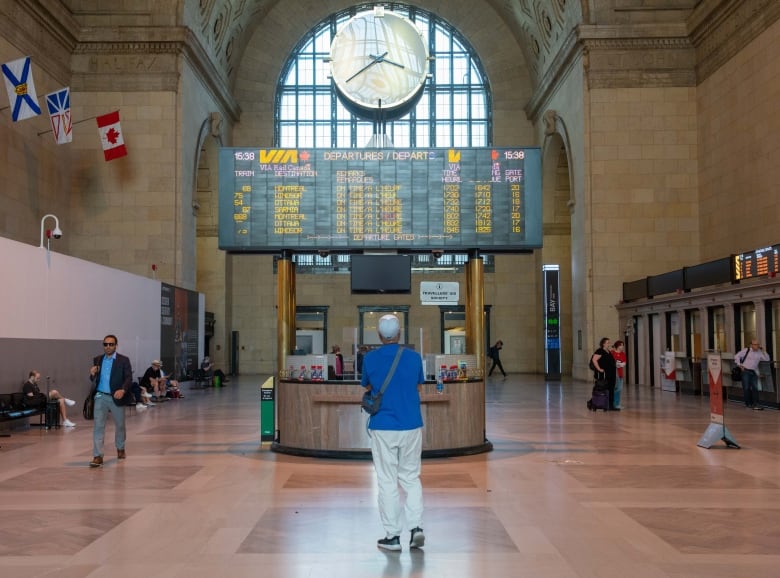
The federal government has hired two consultants to examine ways to improve passenger rail service in southwestern Ontario after pandemic fears of close contact with strangers torpedoed ridership to crisis levels.
Transport Canada recently announced infrastructure consultants CPCS Transcom Limited and engineering firm WSP would undertake a study, starting this month, of how to improve passenger rail service in southwestern Ontario.
The two companies will advise the government on how to shorten travel times, increase trip frequencies between major cities and offer a train service that is “more reliable” with “improved on-time performance,” with a report due in 2023.
This month’s announcement is part of a multibillion-dollar effort to improve passenger train service between Windsor, Ont., and Quebec City, where train travel has been plunged into a ridership crisis that has been decades in the making.
Pandemic ‘decimated’ rail services
“The truth is the pandemic absolutely decimated all of the rail services,” said Malcolm Cairns, an Ottawa-based railway consultant who undertook a major study of passenger train service in Ontario and Quebec in 2020.
“Some of the private train services were shut down and transit just went from an average of 60 per cent cost recovery to 20 per cent cost recovery. People weren’t travelling on it, obviously. Passenger rail service, inter-city commuter service and subway service, it all really went to hell in a hand basket.”
Add to that aging infrastructure and passenger cars, as well as service cuts, and Cairns said you have a recipe for disaster. In fact, ridership is so low and Via Rail’s passenger fleet is so old that Transport Canada recently ordered that empty coaches be used as safety buffers at the front and back of trains in the event of a collision.
Cairns said unlike other industries that have rebounded since the pandemic, passenger rail service does not appear to be coming back, and it may take at least a decade before efforts to revive it start paying dividends.
However, Via Rail’s quarterly reports indicate that ridership hit a low of 60,000 riders in the second quarter of 2020 and since then, has crept back up to 767,000 by the same time this year — for context, that’s about 60 per cent of the service’s ridership level of 1,203,000 in the second quarter of 2019.
Passenger rail in Ontario ‘always lost money’
“It’s always lost money operating wise,” Cairns said of passenger rail service between Windsor and Quebec City. “I strongly suspect this is just another study of what to do.”

Cairns isn’t the only industry watcher with a pessimistic view of whether something will actually be done to revive dwindling passenger rail service.
Paul Langan, a passenger train advocate and president of High Speed Rail Canada, said the southwestern Ontario study will mark one of the few times the federal government has looked at passenger rail service in the region in more than 20 years.
Because the region has flown under the radar for so long, he said, the aging tracks west of Kitchener are congested and without new, dedicated passenger tracks, there’s no way more frequent trains can run.
“They can’t fit anymore trains on the existing track. They said ‘no’ to high-speed rail, which is new track, dedicated track, so to me it’s just another study.”
The last study to look at rail travel between Windsor and Toronto was a provincial study into the possibility of a bullet train between Windsor and Toronto in 2016, when former Liberal transport minister David Collenette was commissioned to write a report on whether the province could build and sustain such a service.
The final report is still available on the Ontario government website.
Just ‘another study,’ or is it something more?
“In my opinion, in Canada and Ontario, we have many studies that were done and no action was taken. The latest, of course, was Collenette’s one, with a very good plan to get people in and out of Toronto in a quick fashion, so yeah, it’s another study,” Langan said.
Unlike Langan and Cairns, Collenette, who responded to a request for comment from CBC News via email Thursday, was far more optimistic about the study, saying it was a “good move” by Transport Canada.
“It is broader than the one I did, which specifically dealt with [high-speed rail between] Toronto-Kitchener-London,” he wrote. He added there are many rail lines to consider in the region, including in Stratford, Brantford, St. Thomas, Goderich, Sarnia and the underused Canadian Pacific tunnel in Windsor under the Detroit River.
In terms of what the study will look at, it’s too early to say, according to Benoit LaPlante, director of communications at CPCS Transcom Limited.
He said the company would be happy to share more information as the study progresses.
A spokesperson for Transport Canada was not immediately available for comment Thursday.